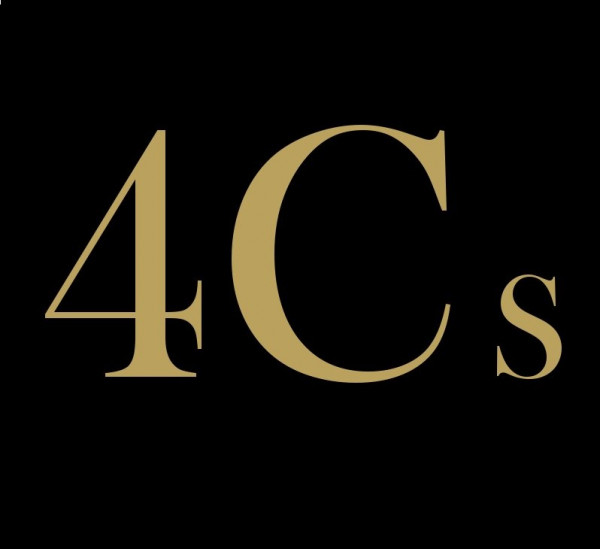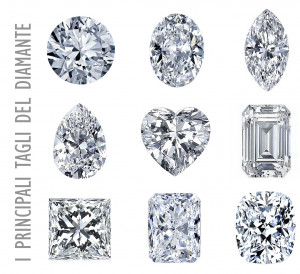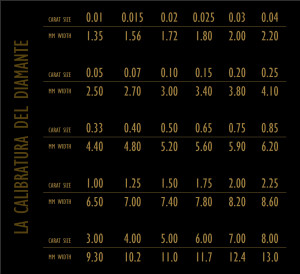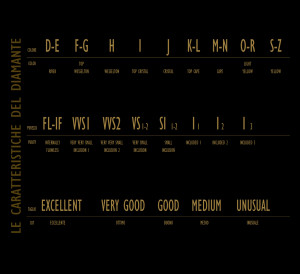
CUT CARAT CLARITY COLOR
When buying a diamond, you should mainly consider the following classification standards: Cut, Carat, Clarity, Colour – the 4Cs. They are the main features in order to choose your diamond. That is a good starting point which helps examine the little precious differences making a diamond unique and to be able to appreciate the secrets and difficulty of the selection of diamonds.
CUT
The value of a diamond depends on how and how much it has been processed. The first step to the processing of diamonds is rough crystal, which is their native shape. Rough diamond lends itself to specific types of cutting. The cutting aims to make the diamond as bright as possible. The quality level of cutting is determined by the balance of symmetry and precision in details.
CARAT
The value of a diamond depends on its carats. After the processing, the diamond becomes a brilliant (Fancy Cut) with its final weight. The unit of measurement is the mass carat (Ct): one carat is equivalent to 0.200 Gr, one carat is divisible into one hundred points of two milligrams each. The mass carat is not to be confused with the purity carat (kt), used for precious metals.
CLARITY
The value of a diamond depends on its clarity as well. Gem diamond may be classified according to a clarity scale. Like all other natural gems, diamonds can have some typical inclusions, which may be more or less visible. Inclusions are considered natural imprints of the diamond crystal. Some kinds of inclusions may be so interesting that the value of the gems becomes even higher.
COLOUR
The value of a diamond depends on its colourlessness. A diamond may range from completely colourless to showing clearly visible shades of colour. These shades do not affect the clarity nor the beauty of diamonds. “Fancy Colour” diamonds are something rare and their range goes from light nuances to vivid and intense colours. Natural colours in the pink and light blue spectrum are particularly rare; they can be further classified. Fluorescence, a natural feature of many diamonds, is the reaction to ultraviolet light, and might influence the way the colour is perceived in natural light. You can always find this in certificates.
Business Ethics
Transactions in the main Stock Exchanges of the world comply with the latest international agreements (Kimberley Process), thus guaranteeing that diamonds on the market come from warfree countries.


